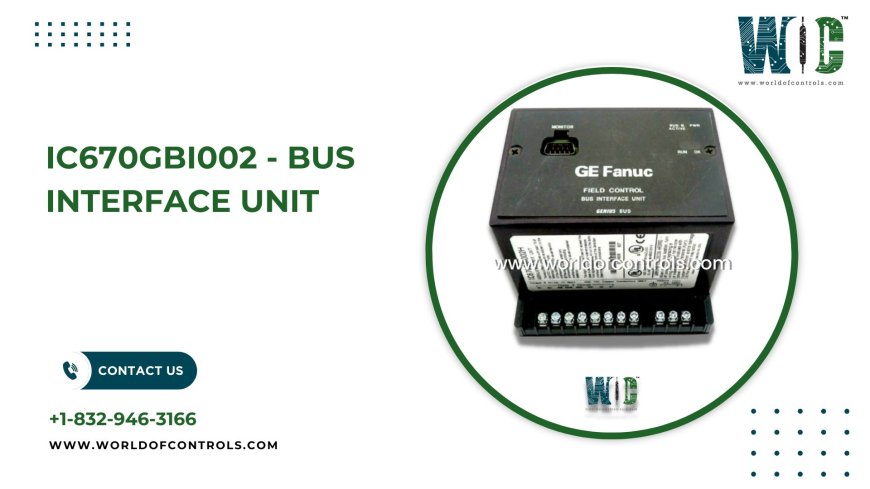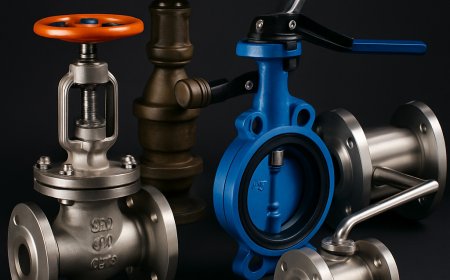How Bus Interface Units Enhance Field Control Systems
Enhance turbine control systems with Bus Interface Units—streamline communication, boost reliability, and reduce wiring complexity.

In todays industrial environments, especially in sectors like power generation and turbine control, precision, speed, and reliability in communication between control units and field devices are essential. A critical component that facilitates this integration is the Bus Interface Unit (BIU). These devices serve as the communication backbone in field control systems, enabling smooth data exchange between sensors, actuators, and central controllers.
What Is a Bus Interface Unit?
A Bus Interface Unit is a device that acts as a communication bridge between a central processor and remote input/output (I/O) modules in a distributed control system. Instead of connecting each I/O module directly to the controller with point-to-point wiring, a BIU allows for a streamlined, bus-based architecture that is more efficient and easier to manage.
In practical terms, the BIU translates signals from the field into data that the control system can understand and respond to. It supports protocols like Genius, Modbus, or PROFIBUS and ensures real-time communication across the system.
Why Bus Interface Units Matter in Turbine Applications
Turbineswhether gas, steam, or hydroare complex machines that depend on real-time monitoring and precise control. Important characteristics including temperature, pressure, fuel flow, and shaft speed are measured by sensors positioned throughout the system. These sensors must communicate their data continuously to a central control unit, which processes the information and adjusts actuators accordingly.
A Bus Interface Unit plays a critical role in this loop by:
-
Reducing wiring complexity across large installations
-
Increasing system response speed
-
Giving several I/O modules access to a single location
-
Ensuring robust and fault-tolerant communication
In turbine control systems, where uptime and safety are paramount, the BIU helps maintain consistency and speed, minimizing lag or data loss that could compromise turbine performance or safety.
Key Functions of a Bus Interface Unit
1. Data Aggregation
The BIU collects data from various sensors and sends it in a structured format to the controller. This centralized communication helps simplify diagnostics and data management.
2. Signal Conversion
Different sensors and actuators may operate on different signal types (analog, digital, etc.). The BIU ensures device compatibility by managing protocol and signal conversion.
3. Fault Detection and Diagnostics
Many BIUs come with built-in diagnostic features. These can alert operators to problems such as communication faults, power issues, or device failuresan essential feature in critical systems like turbines.
4. Scalability
The BIU makes it simple to integrate more field devices as turbine systems grow. This modular design makes future upgrades more manageable and cost-effective.
Advantages in Field Control Systems
Improved Efficiency
Installing a BIU is easier and requires less cabling. This improves the system's efficiency and ease of maintenance while reducing labor and material expenses.
Faster Troubleshooting
Since data from all field devices is funneled through a central BIU, identifying and resolving faults becomes faster and more accurate.
Enhanced Reliability
Modern BIUs are designed to operate in harsh industrial environments. Their rugged construction ensures continuous operation even under extreme conditions such as those found in turbine enclosures.
Flexible Integration
Whether used in new builds or retrofit projects, BIUs can interface with a wide variety of I/O modules and communication networks, allowing engineers to design highly customized control systems.
Conclusion
Bus Interface Units are indispensable in modern field control systems, especially within the turbine industry where precision and reliability are crucial. By consolidating communication, reducing wiring, and enhancing diagnostics, BIUs offer a scalable, efficient solution for connecting field devices to control systems.
In an industry where even milliseconds matter, the ability of a BIU to ensure seamless and accurate data exchange plays a vital role in improving overall system performance and minimizing downtime. As turbine technology continues to evolve, the demand for robust and intelligent control infrastructureand by extension, high-quality Bus Interface Unitswill only continue to grow.
View More Products











































